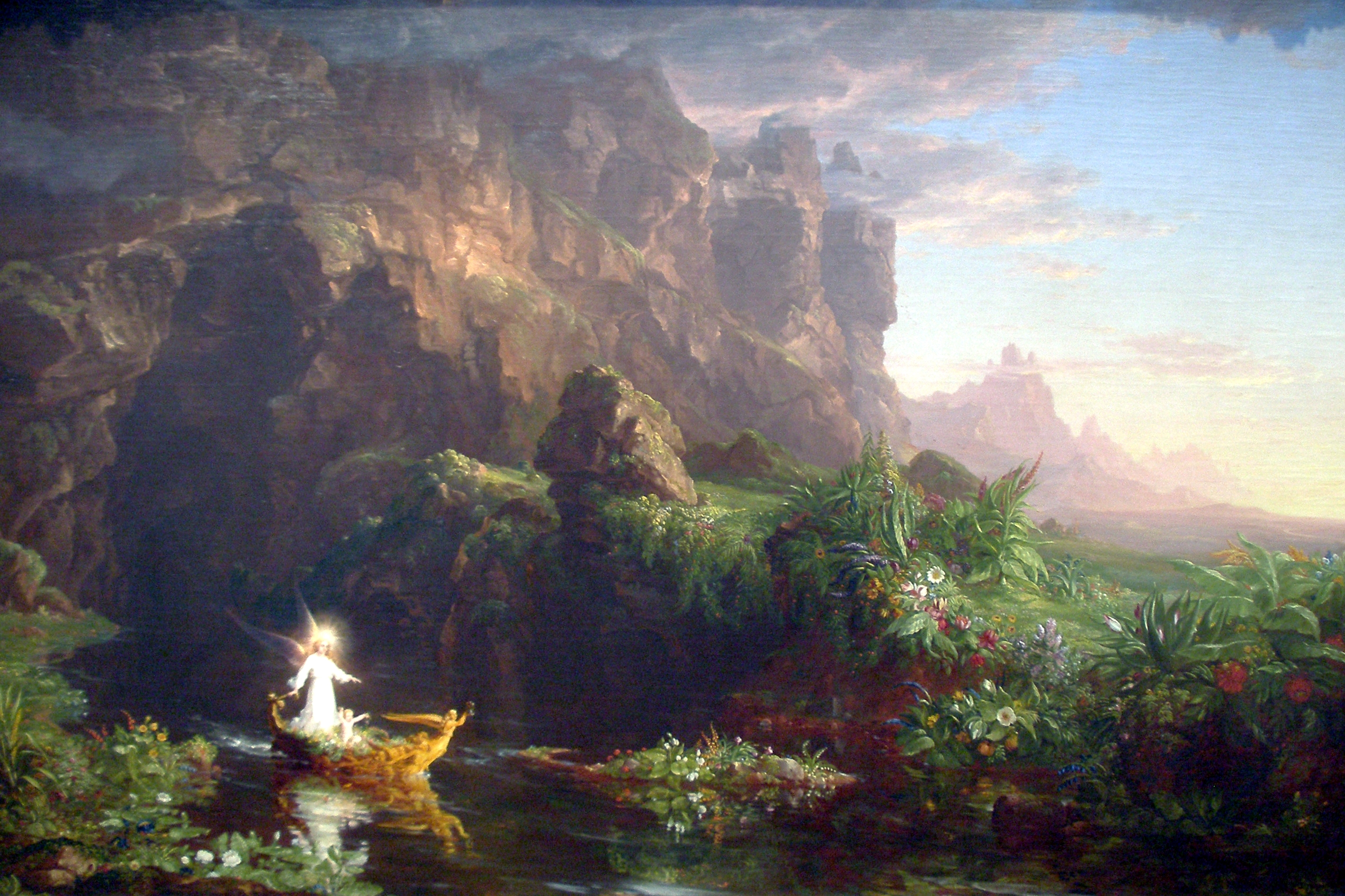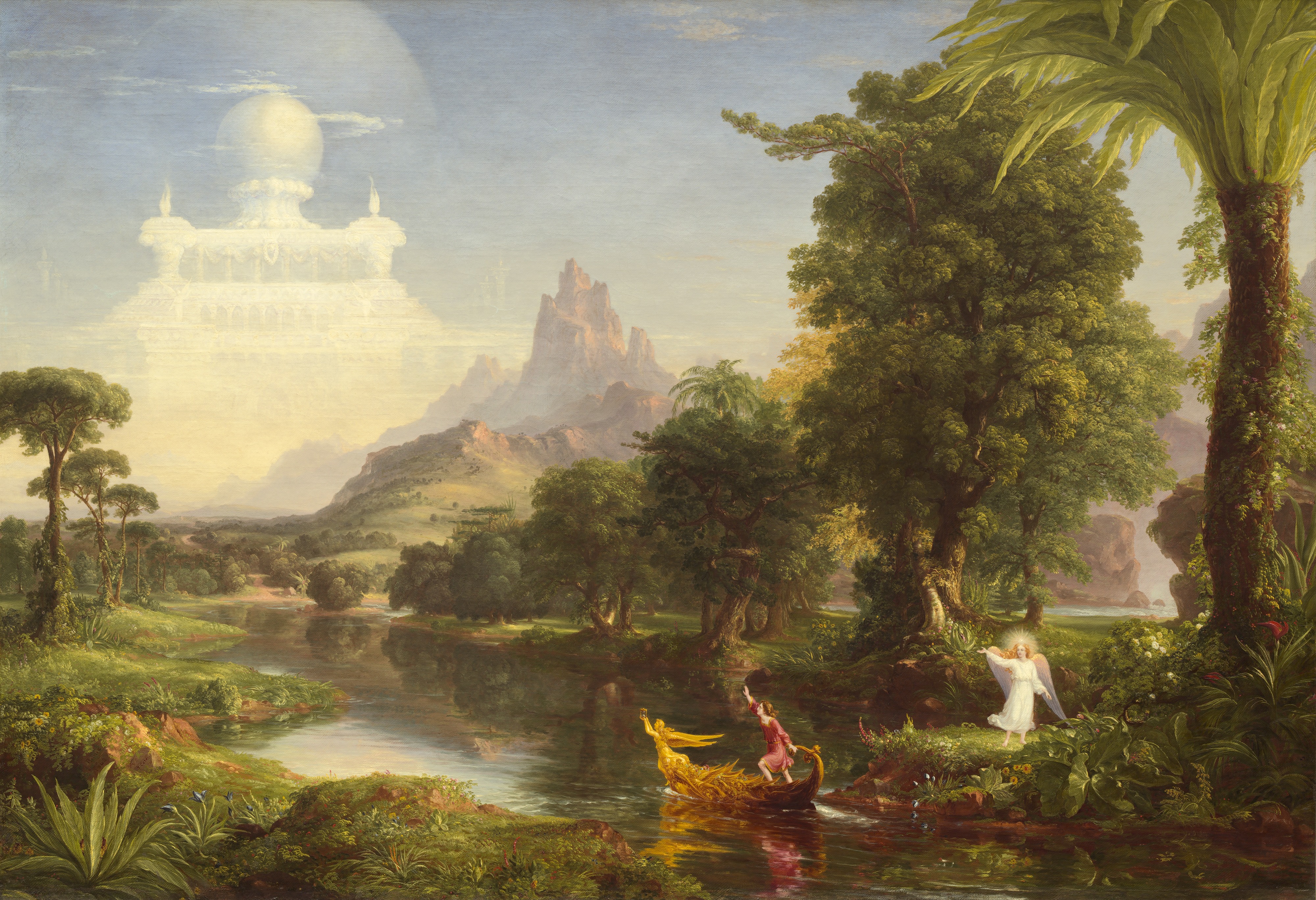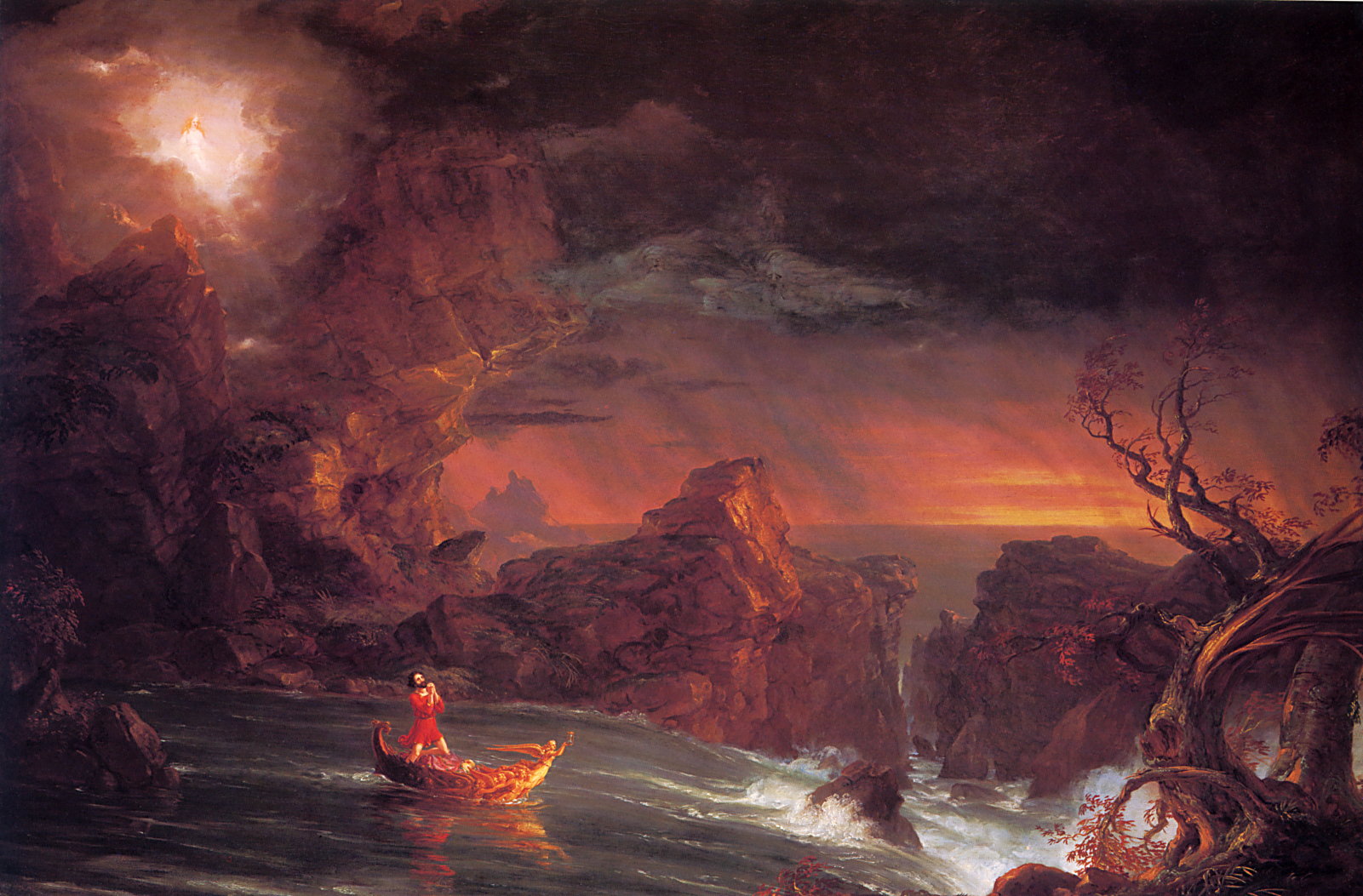It's the story of Everyman, beautifully told by one of the founding fathers of American art. The Chrysler Museum of Art presents Thomas Cole's Voyage of Life, a special exhibition of some of the finest—and largest—works by our country's greatest landscape painter. This show will be on view from October 21, 2014 through January 18, 2015. Admission is free.
The centerpiece of this exhibition is the iconic series The Voyage of Life (1839–40), the most famous and beloved work of landscape master Thomas Cole (1801–1848). Spanning four monumental canvases, Voyage of Life takes viewers on a journey through
Childhood,
Youth,
Manhood,
and Old Age,
presenting each stage as the progress of an everyday voyager along a grand but treacherous river.
These masterpieces from the collection of the Munson-Williams-Proctor Arts Institute Museum of Art in Utica, N.Y., are rarely loaned to other museums, and they embark on this historic tour together with a choice group of seldom-exhibited preliminary studies and early prints.
Childhood,
Youth,
Manhood,
and Old Age,
presenting each stage as the progress of an everyday voyager along a grand but treacherous river.
These masterpieces from the collection of the Munson-Williams-Proctor Arts Institute Museum of Art in Utica, N.Y., are rarely loaned to other museums, and they embark on this historic tour together with a choice group of seldom-exhibited preliminary studies and early prints.
Voyage of Life is the finest and most celebrated example of what Cole called a "higher style of landscape," through which he aimed to illustrate moral messages with the beauty of nature. The artist began his career with illustrations of the forests, rivers, and mountains of Hudson River Valley and Catskill Mountains of upstate New York. Based on these works, Cole is remembered as the inventor of the Hudson River School of landscape painting and one of the first artists to define a distinctly American style of art. Cole, however, always aspired to be more than "a mere leaf painter." Thus, for this monumental series, he combined his expertise in landscape painting with an epic story of faith and perseverance, celebrating nature as a source of religious and poetic inspiration.
This series was widely admired, and reproductions of it decorated parlors throughout America in the mid- and late-1800s. The Chrysler's exhibition traces not only the creation of the Voyage of Life, but also the spread of its popularity thanks to the new technologies of printmaking and photography. In 1842 Cole added to its fame by painting a second version of the series, now in the collection of the National Gallery of Art in Washington, D.C.
To enhance the exhibition, the Chrysler will hang the paintings opposite its own Thomas Cole masterpiece,
The Angel Appearing to the Shepherds (1833–34).
While works in Voyage of Life are each over seven feet wide framed, The Angel Appearing to the Shepherds is the largest single canvas that Cole ever painted, covering almost 16 horizontal feet of wall space.
The Angel Appearing to the Shepherds (1833–34).
While works in Voyage of Life are each over seven feet wide framed, The Angel Appearing to the Shepherds is the largest single canvas that Cole ever painted, covering almost 16 horizontal feet of wall space.
This exhibition will be on view in other American cities, but The Angel Appearing to the Shepherds is unlikely ever to travel, due to its size and fragility, Mann noted. The painting once belonged to the Boston Athenaeum, but after being rolled up in storage for generations, it was purchased by Walter P. Chrysler, Jr. in 1980 and immediately given to the Chrysler Museum. Scholars have written about similarities between this work and Voyage of Life, but the paintings have never before been exhibited collectively. This makes the Norfolk exhibition a once-in-a-lifetime opportunity to see these Cole masterworks together.
"We alone are uniting an artist's early masterpiece with his signature achievement," says Mann. "In one, we see youthful ambition and potential. On the opposite wall, we have mature talent and professional triumph."
Thomas Cole's Voyage of Life will be on view in the Penny and Peter Meredith Gallery, a newly expanded and refurbished space in the heart of the Museum's Brock Wing of American Art. The show will include an interactive touch-screen kiosk for deeper exploration of Cole's life and career, and The Museum Shop will offer a beautifully illustrated, 80-page exhibition catalogue for sale ($24.99).




